Mango flowering occurs with great regularity in Florida mainly due to seasonal conditions of cold spells and dry spells. (So it does require a spell of sorts to make 'em bloom.) In equatorial climates blooming can occur almost any time of the year and indeed, inducing flowering can be the main problem. Lychees, that have a very similar fruiting mechanism, are known not to produce at all in ultra-tropical climes.
Late season Mango bloom
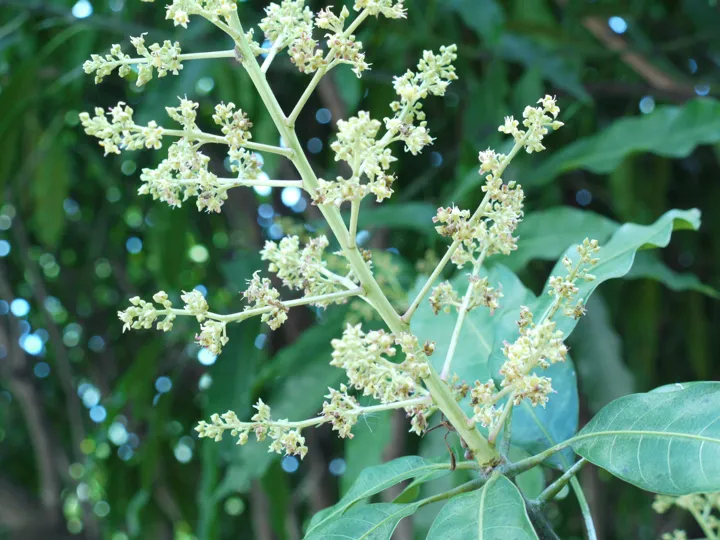
What we have going on right now in Florida, is the latest mango bloom in memory. The earliest we ever get are when strong cold fronts come slamming into the area in November and right away any new growth puts out flowers instead of vegetative or leaf growth. The same process normally continues through December and January with February being the peak and March the last chance to see any flowering. Well, we just got a second last chance.
Unusual sight for April
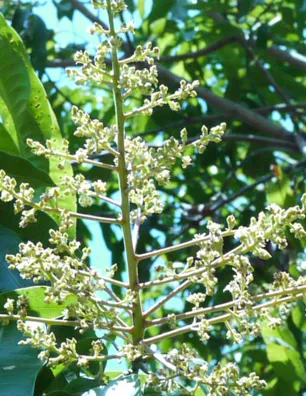
In the upper left you can see some slight vegetative (leaf) growth --
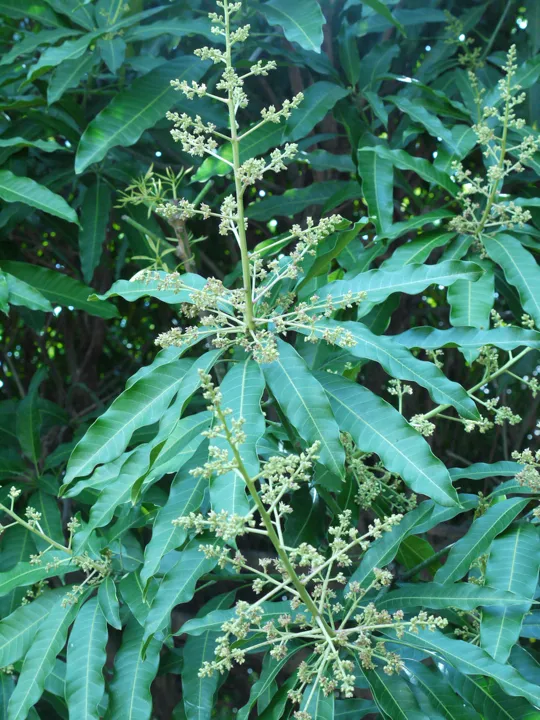
what wasn't expected this time of year was all the flowering.
Trees that were "topped," like the Ice Cream Mango from Trinidad-Tobago pictured below, will take at least one year off before fruiting again. They are in hyper-vegetative growth after losing so much mass from last September's hurricane. Heat, sun and rain will put a new crown on this queen of tropical fruits.
The Ice Cream Mango was discovered by fruit explorer Maurice Kong
on the island of Tobago
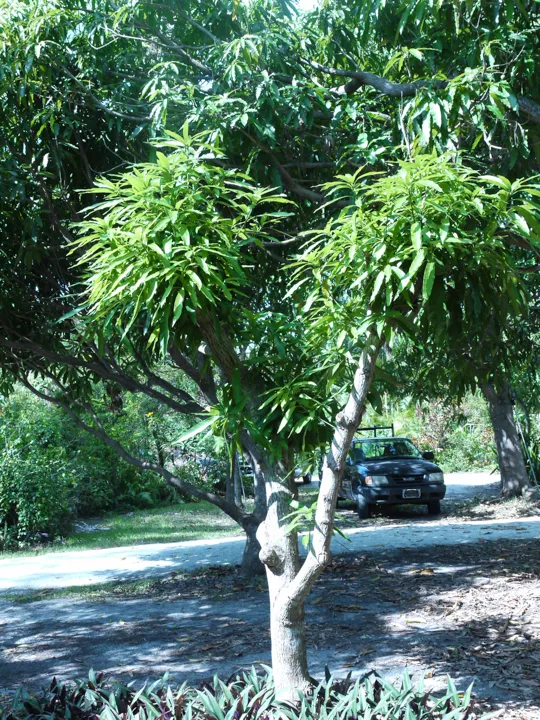
It wins every double-blind taste test competition it is entered into, hands down and with enthusiastic voters from all different parts of the world
The Ice Cream Mango is a smallish fruit on a rather small tree, it's not very colorful, turning yellow-green when ripe without the reds, purples or oranges of the more sensational varieties, and it is subject to blemishing from the anthracnose fungus. So, while it will never be a commercial variety, it's the perfect "dooryard" fruit tree.
Pictured below is the Jamaican favorite Bombay, which is normally "a shy bearer." On this occasion (2013) we had the mother of all bumper crops to compensate for all the disappointing years. This is the "freestone" mango that when ripe, they make a cut all the way around the equator, twist and then spoon out of both halves. No other mango does this quite so well as the Bombay.
Bombay, a Jamaican variety of Indian descent.
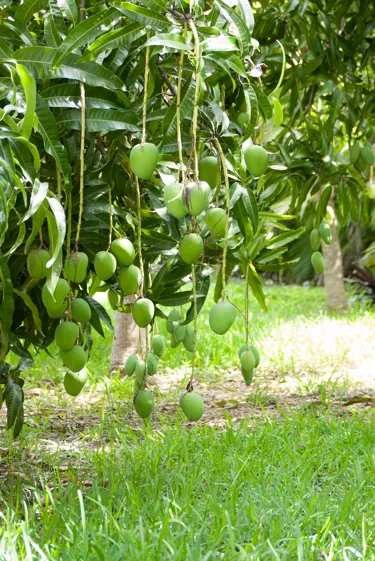
One of the all-time favorite Florida mangoes is the Carrie. Below is a parting shot of a bloom spike just emerging on a Carrie tree. The Carrie is a seedling of Jamaica's all time favorite mango -- the Julie. The Carrie manages to maintain some of the best qualities of the Julie including unique flavors and a smallish tree, without the difficulties of growing the Julie in Florida. While the Julie can be considered a true dwarf tree the Carrie maintains a smallish stature and a rounded canape. Although it is often much wider and broader than it is tall, the Carrie grows rampantly, achieving a moderate size in five years and is much more disease resistant than its Jamaican parent.
A bloom spike just emerging on a Carrie tree.
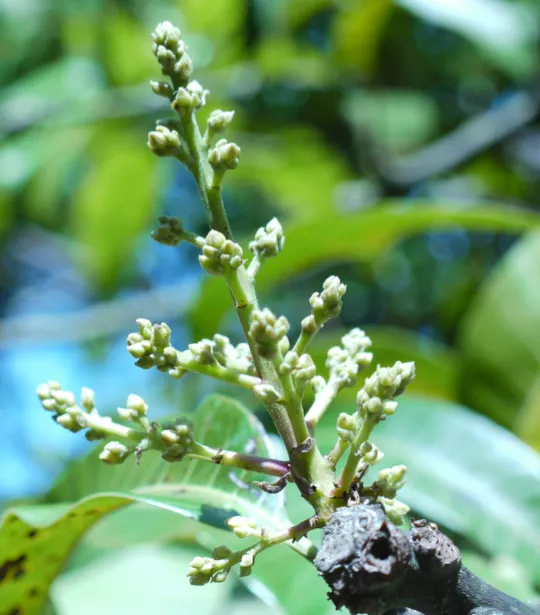
Even the branches will grow branches on the bloom spike.
Stay tuned for the 2018 fruit season from Miami FL USA.